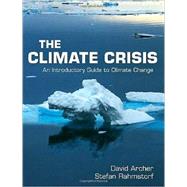This book provides a concise and accessible overview of what we know about ongoing climate change and its impacts, and what we can do to confront the climate crisis. Highly illustrated in full color, it lucidly presents information contained in the Intergovernmental Panel on Climate Change reports, making essential scientific information on this critical topic available to a broad audience.
An incredible wealth of scientific data on global warming has been collected in the last few decades. The history of the Earth's climate has been probed by drilling into polar ice sheets and sediment layers of the oceans' vast depths and great advances have been made in computer modeling of our climate. The book makes essential scientific information on this critical topic accessible to a broad audience. Obtaining sound information is the first step in preventing a serious, long-lasting degradation of our planet's climate, helping to ensure our future survival.
''David Archer and Stefan Rahmstorf - two outstanding scientists - bring us up-to-date on climate science in this remarkable and very readable book. This book deserves to be read by anyone interested in climate change.'' -Professor Paul Crutzen, Max Plank Institute for Chemistry, winner of the Nobel Prize for Chemistry, 1995, for explaining the ozone hole
''The key findings of the IPCC, written in plain and simple terms. Great value in informing the public at large about the science underlying the growing challenge of climate change.'' -Rajendra Pachauri, Chairman of the IPCC and Director-General of The Energy Resources Institute
''Both scientists contributed to IPCC(1997) Vol. 1, and are well qualified to write on this topic. Neither of them is a sceptic. As the subtitle An introductory Guide implies, the book is suitable for undergraduates and first-year graduate students.'' -CMOS Bulleti








